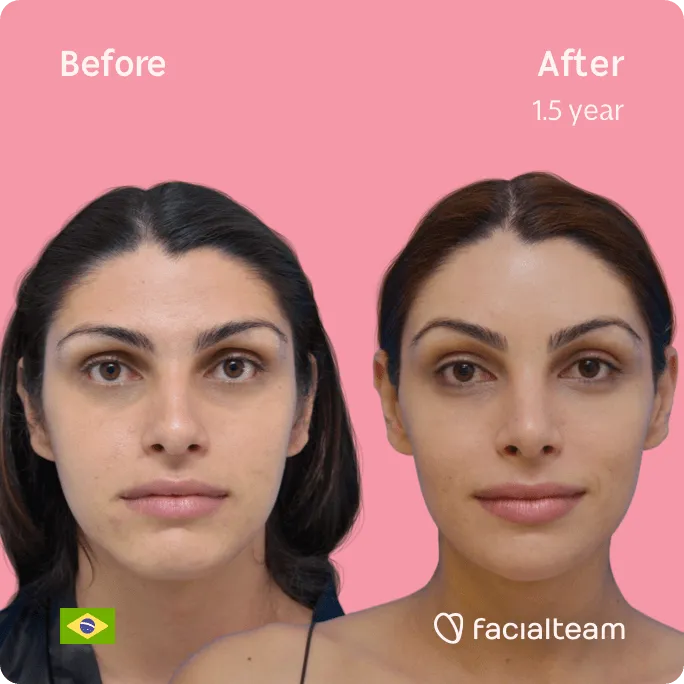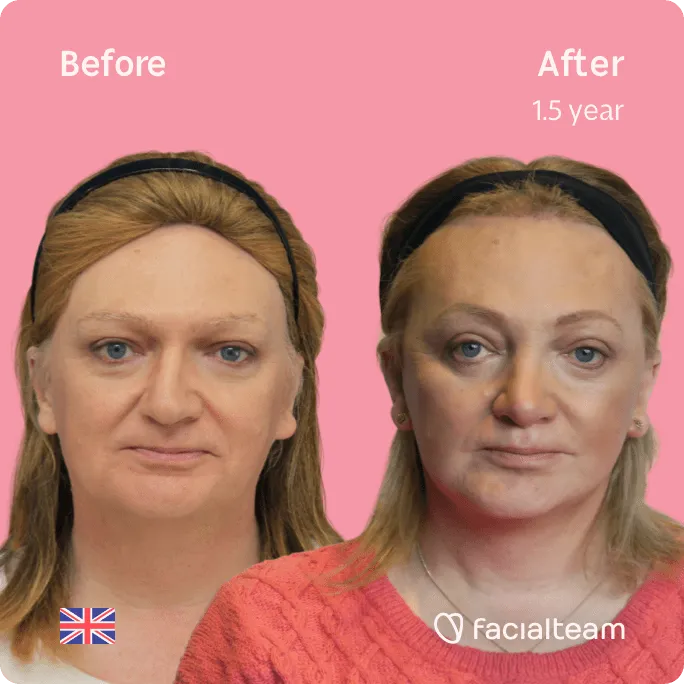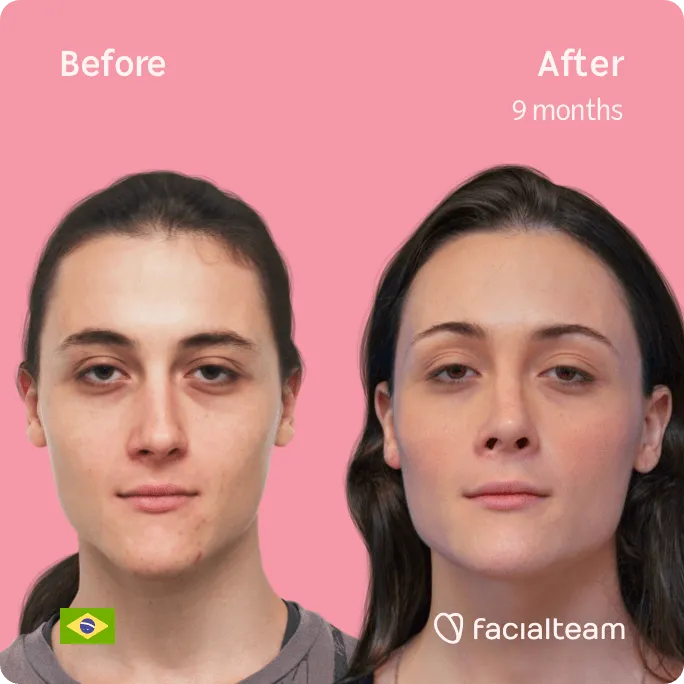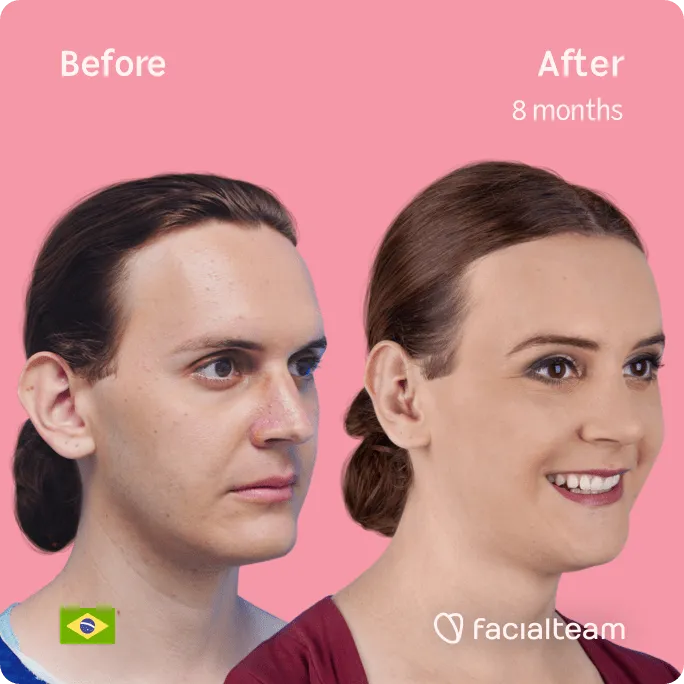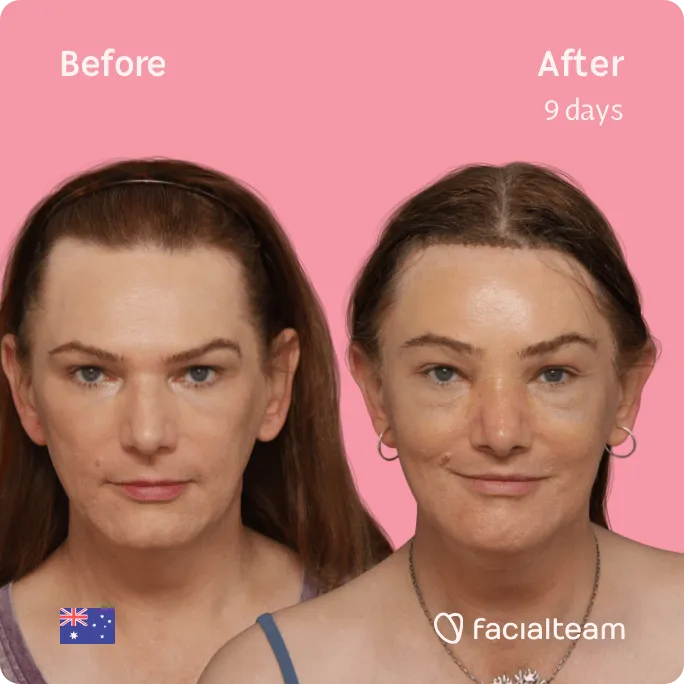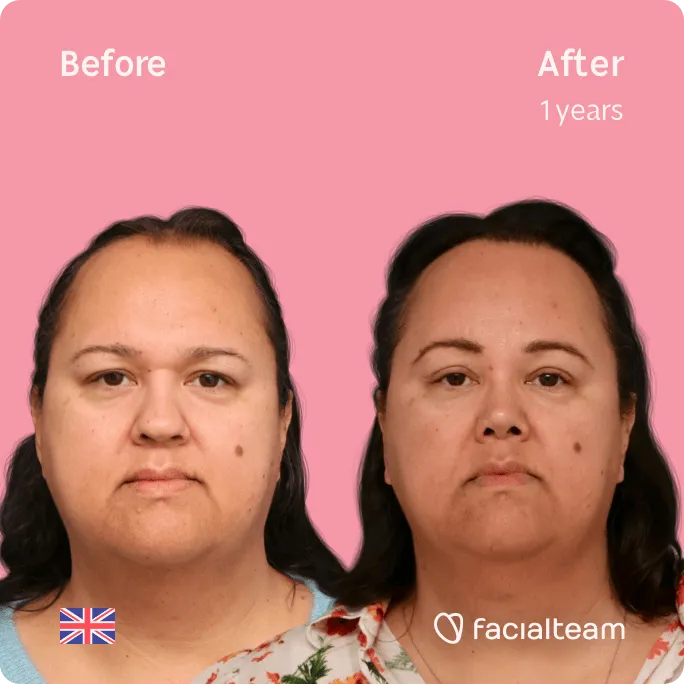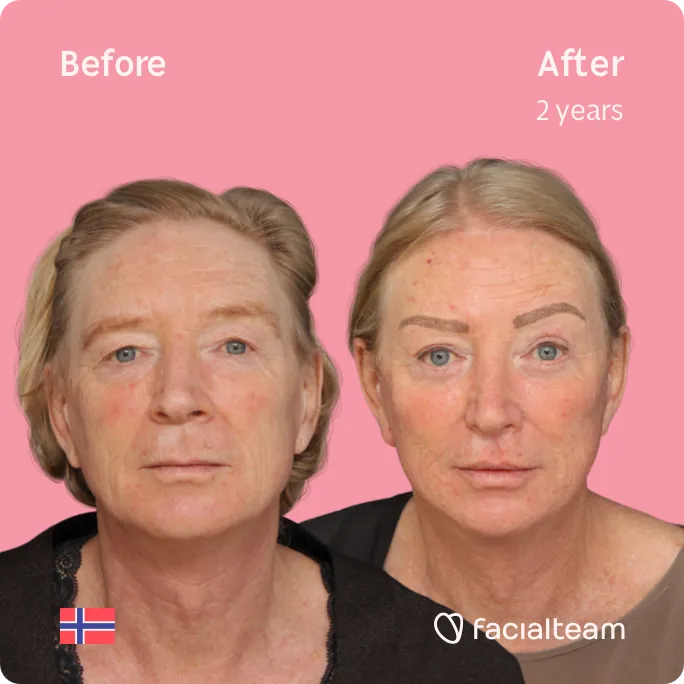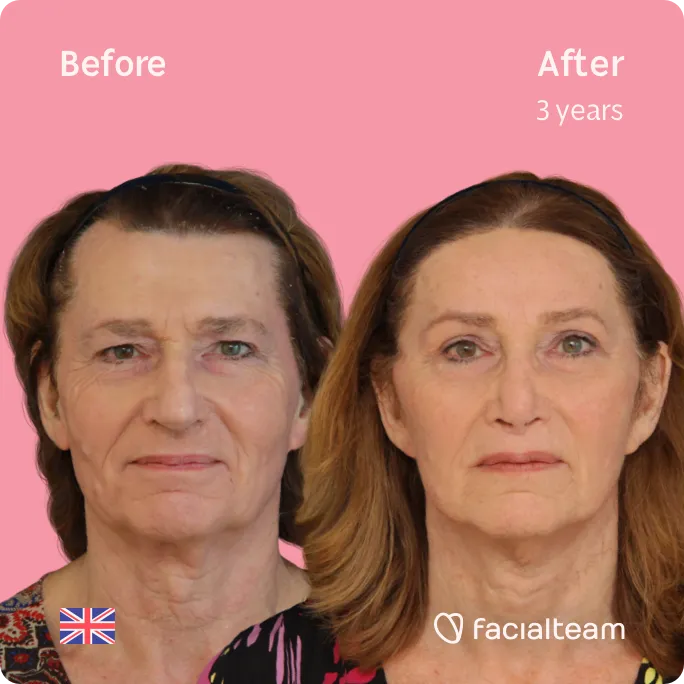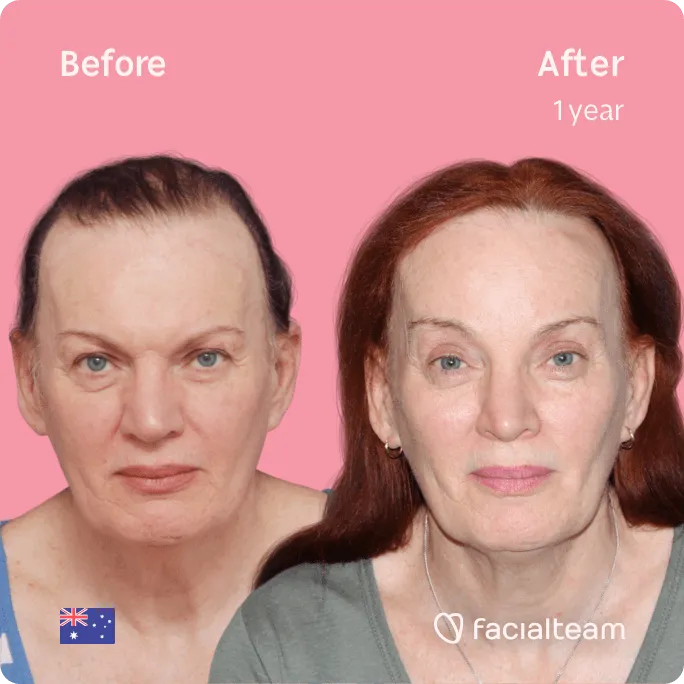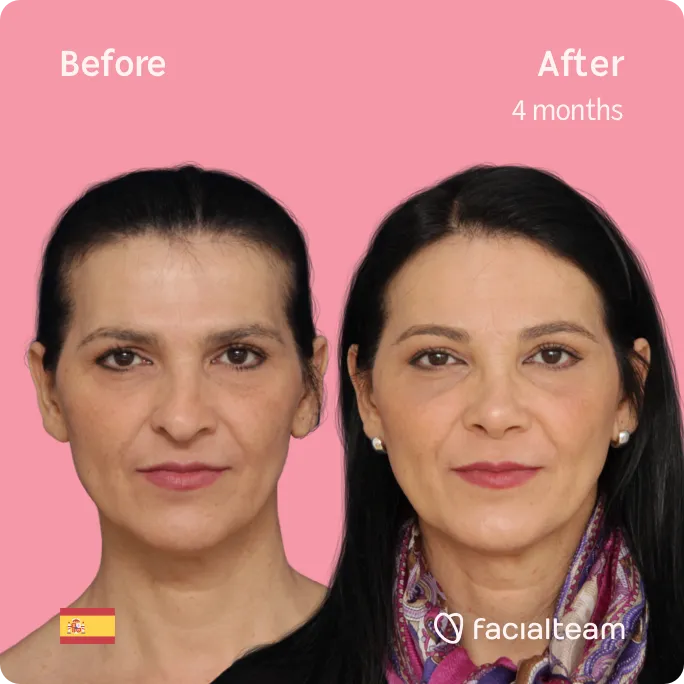What is Nose Feminization Surgery?

Summer
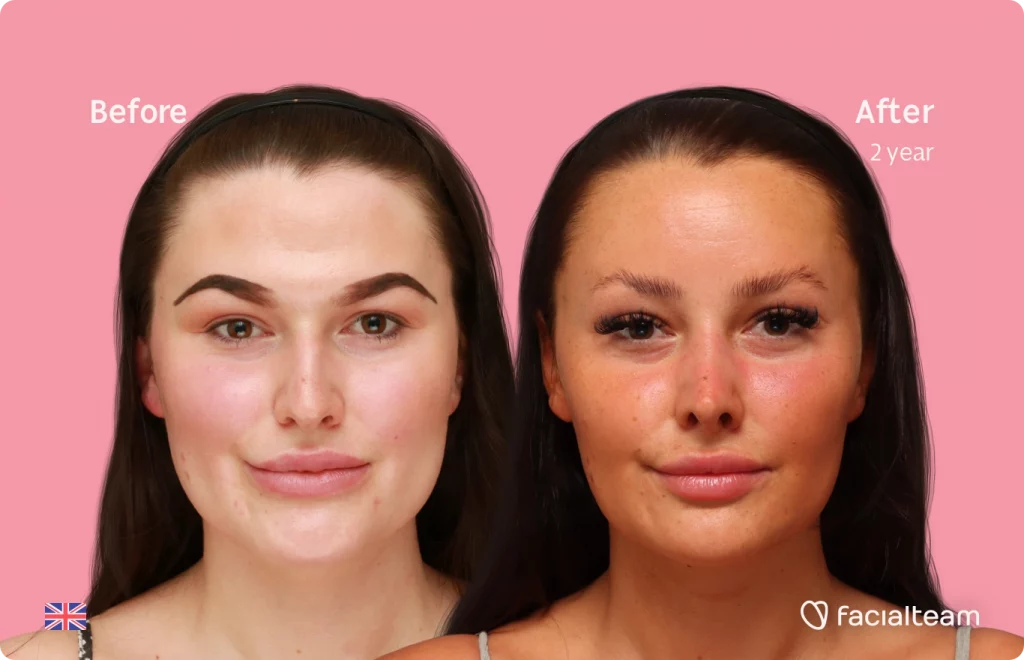
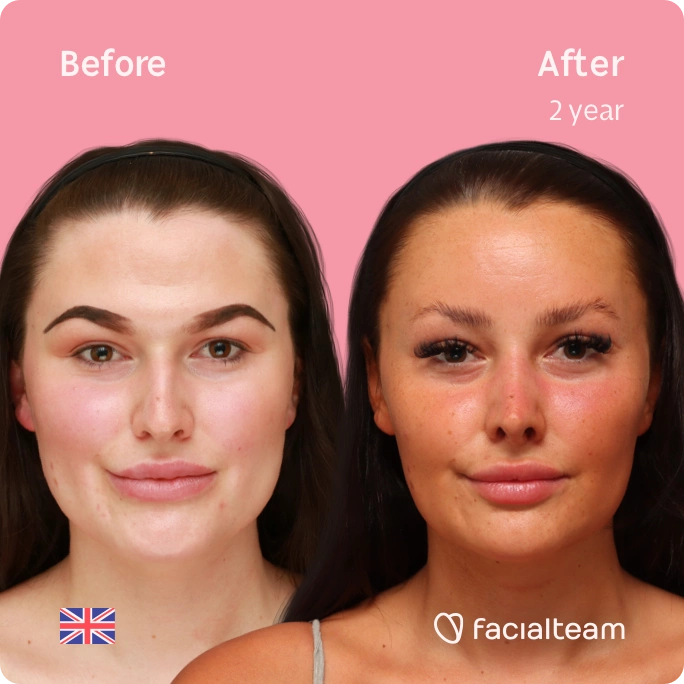
Nose Feminization Surgery, often referred to as feminizing rhinoplasty or Nose FFS, is an umbrella term for those procedures involved in modifying the nasal features to have a more feminine appearance.
With feminization of the nose we aim to soften angles, refine proportions, and enhance overall facial harmony to align with feminine gender markers.
The features of the nose can be harmonized on several planes:
- shape;
- size;
- contour.
All of them give the face a more typically feminine appearance.
Facialteam is the first FFS center to introduce ultrasonic techniques in rhinoplasties and have successfully performed over 1420 nose feminizations.
Our commitment extends beyond the operating room, as our dedicated research team continually contributes to scientific advancements in facial gender affirming surgery. This is why we have develop REVONose®, the Future of Nose Feminization Surgery available for our patients today.
Our philosophy revolves around providing top-quality care and achieving natural-looking results while ensuring your satisfaction and safety.
Am I a good Candidate for Nose Feminization Surgery?
Nose feminization surgery may be key to your global facial feminization result. It is often combined with a forehead reconstruction in order to create a smooth transition between the forehead and nose (frontonasal transition).
The procedure is often a vital part of the FFS process, which can help heighten confidence for people experiencing gender dysphoria. People with a wide bridge, large nostrils or other masculine traits may benefit from nose feminization. A rhinoplasty is effective in recreating more delicate facial features.
Objectives
A feminizing rhinoplasty changes your facial appearance in response to the following goals.
- harmonize your features for a more feminized look that matches your gender identity and expression;
- reduce incidence of misgendering;
- decrease level of gender dysphoria.
Oftentimes nose harmonization occurs alongside other procedures – mainly forehead, lower jaw and chin feminization.
Skin type can affect the results of a rhinoplasty. Skin thickness is a factor that can limit results for some patients. However, we offer free consultations to discuss the results you can achieve.
We aim for your rhinoplasty to be aesthetically pleasing, natural and stable. We address both soft tissues and bone structure for a feminine and attractive outcome, as you will read the procedure techniques below.
Facialteam surgeons are leaders in rhinoplasty for facial feminization.
What is involved in Nose Feminization Surgery with REVONose®?
Rhinoplasty (nose surgery) requires evaluation and personalization to your bone structure and cartilaginous structures. Our approach protects the areas prone to collapse (tip and dorsum) by reinforcing them with cartilage grafts. This helps prevent undesirable shifts during the long-term healing process.
Since 2015, Dr. Raúl Bellinga has used specially adapted ultrasonic instruments for sculpting nasal structures, known as Piezosurgery®. This technology does not cause trauma to soft tissue, allowing for greater precision, significantly smoother recovery and enhanced results.
We perform most nose feminization procedures under general anesthesia, but if your situation requires we will use local anesthesia or sedation. The surgery lasts between one and two hours.
Your safety and results are our top priority. So, depending on the needs and circumstances discussed during your consultation, we offer the following procedures:
- Tip Refinement
We remove a small section of cartilage from the tip. This will narrow the nasal tip and make your nose more feminine. - Profile Feminization
We remove excess bone and cartilage in the nose’s bridge to produce a smooth, feminine profile. - Nasal Bone Narrowing
If the bridge is wide, it can be narrowed by repositioning the nasal bones inwards to refine the shape. - Narrowing of the nostrils
This procedure is called an alarplasty. We remove a wedge of skin from the wings of the nose to reduce nostril width. The incisions we made remain hidden in your natural nasal folds.
Dr. Raúl Bellinga has completed over 1,200 FFS procedures. In the following video he explains what is involved in nose feminization. He talks about the process, recovery times, and current research.
REVONose®
REVONose® is an innovative method of rhinoplasty developed by our surgical team. We care about transgender healthcare standards and we have innovated this learning technology with the highest standards of safety and precision. Two factors crucial for natural, stable outcomes.

Our ultrasonic method has the significant advantage of greatly reducing bleeding and edema (swelling), during and after your procedure. The process involves 3D CT scans to make surgical cutting guides for more accurate osteotomies. Also, key for recovery, we introduce fibrin-rich plasma from your blood to accelerate healing.
Facialteam’s REVONose® is a product of our efforts to pioneer the technology employed in FFS surgery in order to provide better, more predictable and lasting results.
Ultrasonic Rhinoplasty
The use of Piezosurgery® in facial bone surgery gains us predictability. It plays a key role in making Facial Gender Confirmation Surgery safer. For this reason, it has been the standard for nasal osteotomies since 2015.
Piezosurgery® minimizes trauma on nearby soft tissues while increasing precision during nasal osteotomies. To get technical, we perform a direct view using an external approach with an extended subperiosteal dissection. This approach reduces post surgical edema and ecchymosis (bruising). It also provides better control of the osteotomy line when narrowing the nasal pyramid and modifying the bony hump.
Gender of the Nose Region
Masculine noses are larger and wider than feminine noses. Masculine noses have more bone and rigidity. The frontonasal transition from forehead to nose is sharp and prominent in men. The look they create is recognizable as male.
So, a common approach is to perform nose and forehead feminization simultaneously.
In comparison, cisgendered women’s noses are smaller in all aspects. They are narrower, straighter, have a petite tip and frequently a slight curve. The tip of the nose is often sharper and the nostrils are smaller.
Complementary Facial Soft Tissues Procedures
Blepharoplasty
Blepharoplasty surgery seeks the cosmetic improvement of the upper eyelid. This surgical technique allows us to remove excess skin from the upper eyelids, achieving a clearer look, to give us an overall energetic and youthful appearance.
Sometimes, fat redistribution/addition/excision may be necessary to create the ideal look for this region
In addition to this, when the excess skin in the eyelids is significant, it can cause visual fatigue and a feeling of heaviness and with this facial surgery, an immediate improvement is also achieved in this aspect in the form of a reduced feeling of visual fatigue.
Blepharoplasty is a highly recommended procedure to be combined with our REVONose® procedure.
Recovery after Surgery
After rhinoplasty you can return to normal life sooner than you think.
Rhinoplasty sounds painful, but in reality most patients only experience bruising and swelling. Most patients can return to work or school within a week. Usually bruising disappears within two to three weeks. After two months you can participate in high impact sports again. Your bones will have healed completely within this time.
In this video, Dr. Raúl Bellinga explains the healing process. He will clarify what to expect during your recovery.
Short term
After rhinoplasty there will be initial swelling and bruising. Your nose will appear larger than it is. After swelling and bruising disappears, you will begin seeing a more feminine nose. Most changes are more visible in the profile view, almost from the first minute after the surgery.
Long term
For two to three months after your rhinoplasty your nose might appear asymmetrical due to swelling. In about a year and a half you will see full results from your nose feminization surgery.
Rhinoplasty is known to have high complications rates worldwide. Asymmetry, deviation and tip collapse commonly may occur. These after-effects are more likely to occur when aesthetic problems are addressed without attention to the nose’s inner structure. When surgeons only correct aesthetics, results do not last.
Results
Thanks to the use of specific 3D software, we may conduct a detailed analysis of the actual results obtained, evaluating the short-term effect of the changes incurred at your final postoperative consultation before leaving our center.
We are able to clearly visualize the differences in three-dimensions, delivering a complete analysis to each patient for quality control and transparency purposes.
These standardized diagnostics allow the team to discuss early outcomes with each patient from the most objective point of view possible. One year after your surgery, you will receive a satisfaction and evolution survey, which helps us to constantly improve.
Lise Marie
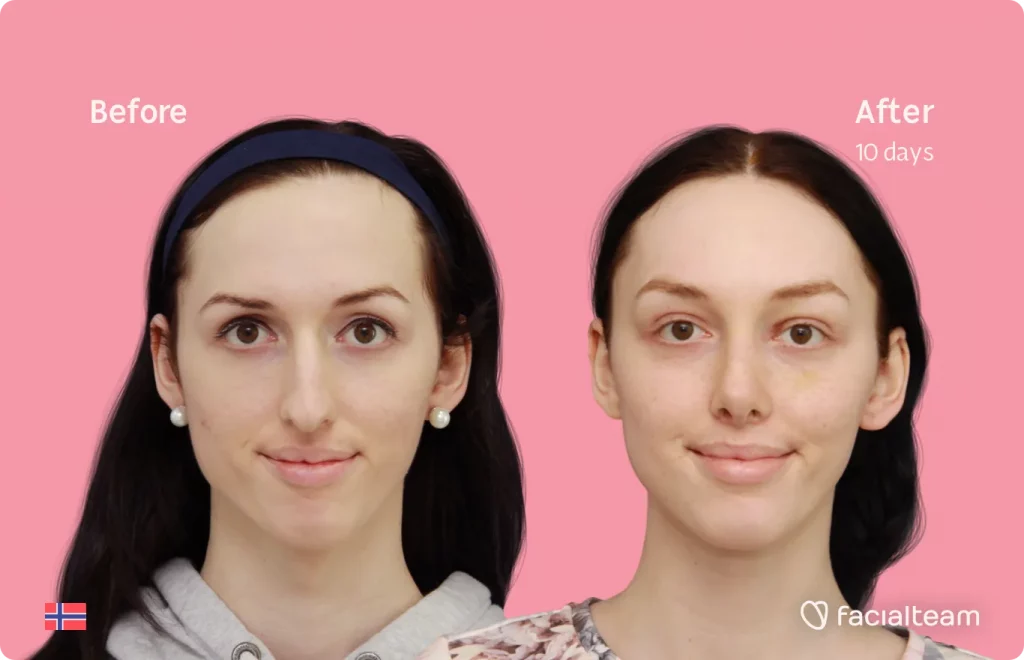
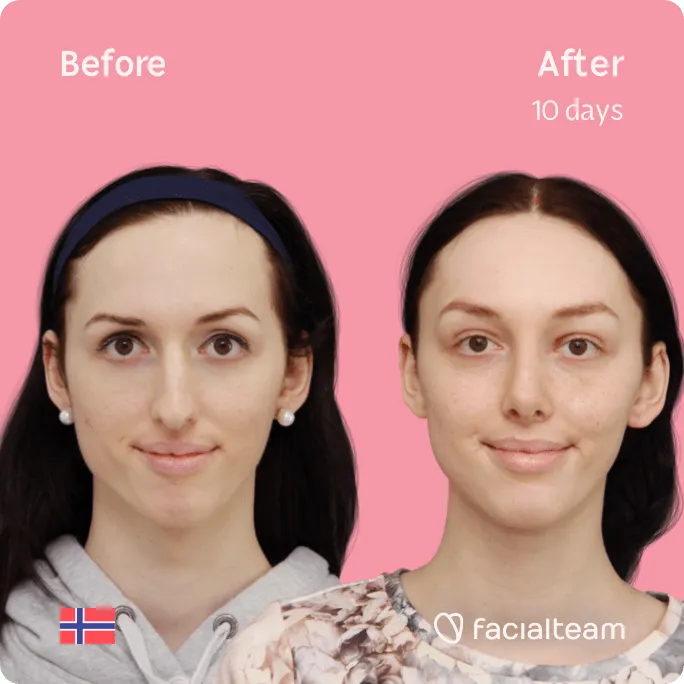
Complications
All surgical interventions, especially if under general anesthesia, are associated with an array of potential complications which are detailed in the informed consent documents. Minor incidents such as swelling, bleeding, or numbness, for example, may occur in varying degrees and are typically temporary symptoms that subside in time.
Major complications are rare and normally detected within days after surgery. Our patients have the security of our medical insurance coverage in case any unforeseen medical attention related to the nose surgery is required.
At Facialteam, the average incidence of complications of nose surgery that require another surgical intervention is 4,66%.
How much does Nose Feminization Surgery cost?
The price of a feminizing rhinoplasty can vary, as the combination of diagnostics, techniques and procedures are personalized to your particular situation. The overall costs for a rhinoplasty with Facialteam (including hospital fees and anesthesia) may range anywhere from 10 600 € to 11 400 €. Depending on the details of complexity and if you choose optional aspects, the final cost may be higher or lower.
We suggest consulting with several surgeons, whose approaches will vary, in order to make a more informed decision of what is best for you.
Consultation
Many factors influence the procedures needed to attain the feminine look in your mind’s eye. For example, we adapt every procedure to your unique facial features.
Our team invites you to a free consultation to plan your facial transition journey. The first step on your path to gender confirmation begins with discussing your goals with experts in FFS surgery.
We will go over your needs and goals and provide you with a comprehensive plan to reach them. This helps us to establish essential procedures and gives you access to top-quality trans healthcare.
Book your Consultation
We offer both online as in-person consultations in our clinic in Marbella, Spain. Our consultations are free of costs and a great aid for those patients seeking advice to start their journey.
Frequently Asked Questions
-
For at least the first two weeks after nose feminization surgery, you should wear contact lenses, because the frames may be uncomfortable and leave marks that delay the final result while your nose is still swollen.
-
You can apply your usual makeup without any problems.
-
Clean your nostrils with saline solution whenever you need. Nasal irrigation with saline solution will help to keep your nasal passages clean and moist, while also reducing nasal congestion.
You can use a syringe or squeeze bottle to squirt the solution up your nostrils. If the water runs into the back of your throat, then simply spit it out. It is fine to accidentally swallow the solution as it is harmless.
The scabs can be softened by applying a cotton swab soaked in hydrogen peroxide or warm water.
-
- 1 week after the suture removal.
Start using Rosa Mosqueta / Rosehip oil 1 week after the suture removal, apply the oil in the mornings and evenings with a gentle massage. Keep using the oil for up to 3-12 months. - 2 weeks after the suture removal.
Start using Dermatix or similar Scar Gel 2 weeks after the suture removal, alternate the use of rosehip oil and scar gel.
Apply the scar gel in the mornings and rosehip oil in the evenings. Keep using the scar gel for up to 3-12 months.
- 1 week after the suture removal.
-
Self-absorbing stitches will dissolve between 4-10 weeks after your surgery.
-
The healing process after a nose feminization surgery varies from person to person, depending on the skin type and the specific procedure performed.
In general, maximum swelling occurs within 24-48 hours after surgery, after which it gradually subsides.
Between the first and second week you will notice a significant reduction in the inflammation and 2 months after surgery, between 80-85% of the swelling will be gone, at which point you can make a preliminary assessment of the final result.
Swelling normally completely disappears around 6 months after nose surgery, although it can take up to one year.
-
It is pretty normal to have swelling in the nose for a long time.
This is the last procedure to heal and needs several months to reach the results wanted. Patience is the key.
-
The first few months are the most difficult due to the swelling which decreases in an asymmetric way.
You may experience swelling or a change of shape in your nostrils as well as the sides and bridge of your nose following your procedure.
It is a matter of time and patience, you are just beginning your healing process.
-
It is important to follow these instructions:
- Take the medication prescribed by the doctor after meals.
- Do not smoke, which increases the risk of infection and impedes healing.
- Sleep with your head elevated (using 2-3 pillows) for the first week.
- Avoid direct sunlight and saunas for 6-8 weeks after the surgery. The sun and extreme heat increase edemas (swelling), slowing the healing process. Use sunscreen, even on cloudy days, for at least one year.
- Avoid crowds and sports where there is any risk of your face being hit for at least 6 weeks.
- Avoid wetting the nose bandage (patch) during the first week. You should always wash your hair with your head tilted back to avoid direct contact between your nose and the water.
- You can wash your face carefully. You should apply Thrombocid Forte 2-3 times a day to any bruised or inflamed areas until they recover. You can apply makeup one week after the surgery.
- Apply Vaseline (petroleum jelly) in the area with the stitches.
- Clean inside the nostrils with a sterile saline solution spray
Research and Education in Nose Feminization Surgery
Our surgical team has extensive experience in nose gender surgery. We have performed over 1428 feminization rhinoplasties. The outcomes of our accomplishments are shared with the medical community in scientific publications.
Publications
This technique is based on several scientific articles produced by our group throughout our clinical practice. Our academic literature is a record of our dedication to the science of feminization surgery of the upper facial third since 2008.
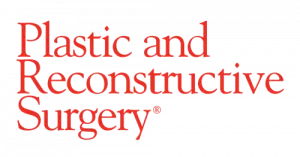
Role of Rhinoplasty in Transsexual Patients
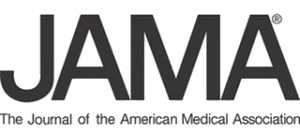
Technical and Clinical Considerations for Facial Feminization Surgery With Rhinoplasty and Related Procedures



